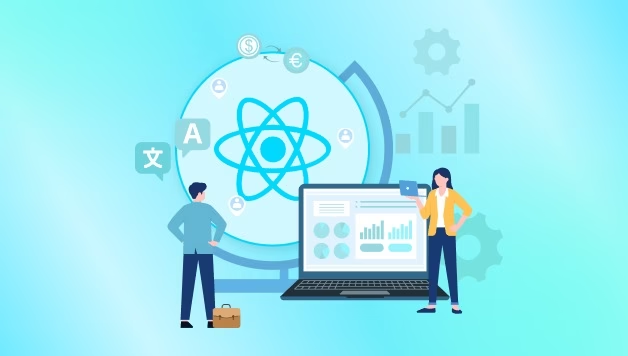TL;DR
AI internationalization in React is transforming static, manual workflows into dynamic, context-aware systems. By leveraging LLMs, developers and localization managers can automate, personalize, and scale multilingual apps with unprecedented speed and accuracy.
Overview
As global product reach becomes non-negotiable in 2025, the internationalization of web applications—especially those built with React—has transformed from a technical necessity into a strategic advantage. However, traditional localization workflows have often lagged behind in scalability and efficiency. Enter AI. The rise of LLMs (large language models) and AI-driven tools is redefining how internationalization in React apps is built, managed, and deployed.
In this article, we’ll explore how AI internationalization in React is transforming developer workflows, improving accuracy, and accelerating localization across multilingual applications.
The Problem with Traditional i18n Workflows in React
Internationalization (i18n) in React has traditionally relied on manual processes and static configuration files. Developers or content managers often create JSON resource files for each language, manually map keys to text, and collaborate with translators via external tools.
This approach poses several challenges:
- Manual translation bottlenecks: Human involvement at every stage slows release cycles.
- Static files lack context: Translators may not know where text appears in the UI.
- Scalability issues: As apps grow, so do the translation files and maintenance burden.
Such limitations make internationalization in React error-prone and inefficient for global-scale applications.
Enter AI: A Game-Changer in i18n Automation
AI has begun reshaping the i18n pipeline by introducing contextual intelligence, automation, and real-time localization features that go beyond traditional tooling.
How LLMs Understand Contextual Meaning
Unlike rule-based translation engines, LLMs can infer meaning from UI context, component hierarchy, and surrounding text. This allows more accurate translation suggestions for components, particularly when nuance or informal tone is involved.
Reducing Human Errors and Speeding Up Translation
AI-powered localization tools can flag missing keys, mismatched variables, or outdated translations—eliminating tedious manual QA. Many also offer auto-suggestions directly inside IDEs, reducing roundtrips between developers and translators.
AI in Detecting Cultural Nuances and Tone
Cultural sensitivity is no longer just a post-editing task. AI models trained on multilingual datasets can now suggest tone adjustments and idiomatic expressions based on locale, improving user resonance in non-English markets.
Key Benefits of AI-Powered Internationalization in React
The shift to AI-driven systems provides tangible value for engineering and localization teams alike:
- Real-time translation suggestions within VSCode or translation dashboards
- Automated translation key generation during component scaffolding
- Multilingual testing integration in CI/CD pipelines for pre-release validation
- Adaptive text rendering based on user locale and personalization signals
Mid-project teams adopting these workflows have seen significant reduction in time-to-localize and improved linguistic consistency across releases.
Popular AI-Driven Tools for React i18n
Modern i18n tools are rapidly integrating AI to enhance translation management.
Lokalise AI, PhraseAI, Tolgee AI
These platforms combine translation memory with AI-powered suggestions, enabling faster content updates and reducing linguistic errors. For instance, Tolgee AI offers in-context editing directly inside your React app.
Integrating LLMs with LinguiJS or FormatJS
LinguiJS supports flexible translation formats and works well with external LLM APIs. FormatJS, backed by FormatMessage and IntlMessageFormat, can be extended with AI-based suggestion systems via custom build steps.
GitHub Copilot for Localization Workflows
Copilot is increasingly used to generate translation keys, infer placeholders, and autocomplete localized strings—streamlining development for multilingual UIs.
How AI Enhances Developer Experience in React Projects
Developers benefit directly from intelligent i18n systems for React through:
- Smart autocomplete for translations and variable placeholders
- Automated string validation and detection of missing translations
- LLM copilots that suggest text for new locales or pluralized formats
Mid-cycle localization is no longer a burden—AI enables devs to contribute meaningfully to i18n without switching tools or workflows.
Companies offering specialized reactjs development services are increasingly packaging AI localization as a core feature for scalable global applications.
Challenges and Considerations in AI-Driven i18n
While promising, AI-powered i18n is not without its caveats.
- Over-reliance on machine translation may cause quality issues in nuanced languages
- Data privacy remains a concern, especially when using cloud-based LLMs for sensitive content
- Human review is still essential to maintain tone, grammar, and intent across markets
The best approach combines automation with curated human validation loops.
Best Practices to Implement AI in Your React i18n Stack
To effectively integrate AI into your internationalization stack:
- Use fallback strategies to ensure content is available even if translations fail
- Integrate LLMs into staging environments, not just production
- Set quality benchmarks and string approval workflows to balance AI output with QA
- Adopt semantic naming for translation keys to improve context for LLMs
Proactive planning ensures AI enhances localization without introducing risk.
Final Thoughts: The Future of AI in React Localization
The trajectory is clear: the next phase of internationalization in React will be deeply AI-assisted, from key generation to real-time multilingual UIs. As LLMs become more context-aware, we can expect highly adaptive localization layers that cater to user behavior, device, and regional preferences.
Forward-looking teams are already shifting toward hybrid workflows—combining human intent with machine precision—to accelerate their i18n pipelines. Now is the time to rethink your tooling and adopt intelligent solutions that can keep pace with global demand.







